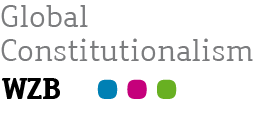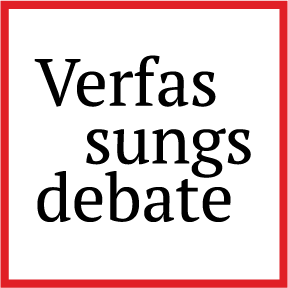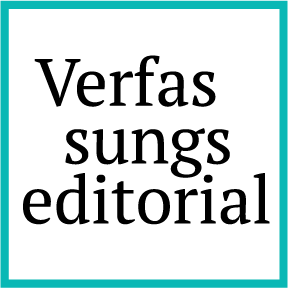Human Rights – The Essential Frame of Reference in the Global Response to COVID-19
COVID-19 has created a situation unparalleled in the post-1945 era, as all nations face the same mortal threat simultaneously. The climate emergency and terrorism are, like the pandemic, global in their causes and consequences, yet their effects are experienced as sporadic and localised. The peril posed by COVID-19 – and the rapidity and, in some cases, extremity of state responses to it – demand a universal framework which can guide decision-makers; ensure accountability for their actions and omissions; and render visible the structural inequalities which determine the pandemic’s differential impact on groups in vulnerable circumstances. International human rights law provides this framework. We argue that it is mistaken to conceive of COVID-19 principally as a threat whose eradication necessarily requires rights to be sacrificed. Rather, human rights standards and principles offer a means of transparently balancing competing interests and priorities in the cauldron of COVID-19 decision-making – and rights-respecting measures which secure public confidence are likely to be more effective and sustainable over time than arbitrary or repressive ones.
Several themes predominate in the plethora of statements issued by United Nations bodies (see here, here, here, here and here) and regional courts and commissions (from Africa; the Americas, see here and here; and Europe, see here, here and here).
Rights are interdependent
The first is the sheer range of human rights at stake – and their interdependence.
A woman living in insecure or overcrowded accommodation with inadequate sanitation is at heightened risk; hence, her rights to housing and health are implicated, along with her right to life. If, during “lockdown”, she is at risk of domestic violence and has no source of state protection or support, her right to life and to be free from inhuman or degrading treatment are at stake. If she cannot access or is actively blocked from accessing the Internet to obtain public health guidance, then so is her right to information (protected under the right to free expression), along with her child’s right to education. If, additionally, she works precariously in the informal economy in a state with no social safety net, forcing her to leave her home to survive, then almost the full range of her socio-economic rights will be engaged.
Imagine, then, that her government allows its security service to track her movements using intrusive surveillance measures (as Israel did, before being successfully challenged on grounds of privacy and lack of democratic oversight). Or that it starts to rule by decree and stifles free expression by permanently criminalising the publication of false or distorted facts that interfere with the “successful protection” of the public (like Hungary). Or that it follows Poland in using the COVID-19 emergency as a cloak to introduce unrelated bills to ban access to abortion and criminalise sex education.
Our notional civilian tells the story of COVID-19, in which states’ pre-existing failure to realise economic and social rights helped to cause or exacerbate the pandemic, in turn creating the conditions for authoritarian power grabs and severe incursions into rights, of the kind being monitored by this Symposium, and also here, here, here and here.
What are states obliged to do in a pandemic?
For public bodies to adopt a “rights-respecting” policy, they must go beyond simply avoiding interferences with human rights, and take protective or preventive steps which positively ensure that certain standards are met. Such a responsibility creates potentially far-reaching obligations during a pandemic, especially towards those who are worst affected. Take the right to life, a non-derogable right in peacetime (see here, para 21). The obligation to protect lives encompasses the general duty to establish and enforce the requisite legal and administrative framework to safeguard life; the operational duty to protect people from real and immediate risks to life that the state knows or ought to know about; and the duty to investigate potential breaches of the right to life, including those caused by the state’s omission.
The Human Rights Committee, which monitors the International Covenant on Civil and Political Rights, requires states to adopt “appropriate measures to address the general conditions in society that may give rise to direct threats to life”, including life threatening diseases (see here, para 26). Such measures include disaster management and contingency planning to increase preparedness; guaranteeing access on a non-discriminatory basis to food, water, shelter, healthcare and sanitation; and bolstering emergency health services.
The right to life is undoubtedly engaged (see here, para 25) in respect of people in the custody or care of the state, such as in prisons, immigration centres, psychiatric facilities and other residential institutions, especially care homes for older people, where COVID-19 has wreaked devastating impact. The UN High Commissioner for Human Rights has warned that the virus is “rampaging” through places of detention worldwide, and UN bodies have urged states to release detainees or find non-custodial alternatives (see here and here). State responses have been uneven; for example, while some have suspended immigration detention, medically vulnerable people in the United States are fighting to be released from over-crowded and insanitary immigration detention facilities.
How far will the state’s duty to protect the right to life extend? Certainly, as Stubbins Bates argues, states’ positive obligations may be triggered in the case of health and care workers required to work without adequate protective equipment, and instances where “systematic or structural dysfunction in hospital services” results in medically vulnerable patients being deprived of access to life-saving treatment.
In respect of the right to health and other rights protected under the International Covenant on Economic, Social and Cultural Rights, other obligations arise. For example, states must devote their “maximum available resources” to combatting COVID-19, without imposing a further economic burden on marginalised groups (see here, para 14). States should also take immediate measures to protect the jobs, pensions and other social benefits of workers during the pandemic, and to mitigate its economic impacts (see here, para 16); for example, by banning evictions (as Canada, Spain, the United Kingdom and some parts of the United States have done). International assistance and cooperation are also enshrined in the Covenant, requiring states to share research, medical equipment and supplies, and best practices in combating the virus, with priority to be given to disadvantaged groups and fragile states (see here, para 19).
Balancing act
If a state takes far-reaching steps to protect life and health, it is highly likely that this will result in the restriction of other rights. However, as Mavronicola explains, while the pandemic may justify or even require exceptional emergency measures, it does not give carte blanche to states to take actions that are impermissible under international human rights law. With respect to qualified rights that may be restricted or derogated from, such as the rights to freedom of movement and assembly and association, positive obligations to protect life and health only extend to measures that constitute legal, necessary and proportionate limitations on those rights – or, in the case of lawful derogation, measures that are strictly required by the exigencies of the emergency threatening the life of the nation. Since scientific evidence is constantly changing, it follows that emergency measures must be time-limited and subject to continuous oversight and review, since a restriction that is necessary and proportionate today may not be tomorrow.
National courts are already grappling with the appropriate balance to be struck between responding effectively to the pandemic, while ensuring that fundamental rights are not swept away. For example, the German Federal Constitutional Court granted interim measures to protect the rights to freedom of assembly and freedom of religion, requiring local authorities to make contextualised assessments rather than indiscriminately banning protests and collective worship. In another instance, however, the Court rejected an application challenging state-level prohibitions on freedom of movement and freedom of assembly on the grounds that, in the circumstances, the danger posed to life from suspending emergency measures outweighed the temporary restriction on personal freedom.
This is the human rights framework in action, allowing not only national courts but also ministers, public authorities and parliamentarians, to balance in a transparent and evidence-based way the competing imperatives generated by the pandemic. A human rights assessment will take account of the wider context, including limited public funding, but it will also scrutinise relevant factors over the longer term – reviewing, for example, the contingency planning which responsible public bodies ought reasonably to have carried out, as well as the impact of a government’s broader social and economic policies, such as austerity policies that hid the poorest hardest.
“The virus doesn’t discriminate but its impacts do”
The COVID-19 pandemic is not, as one British minister averred, a leveller. On the contrary, it has both exposed and exacerbated deep structural inequalities in the social determinants of health both within and between nations. This “unique ecology of sickness”, as the World Health Organisation puts it, provides the starkest possible illustration of the effects of indirect discrimination. Evidence is growing that the effects of the pandemic fall heaviest on the lives and livelihoods of people in vulnerable circumstances, such as older people; people with disabilities; women and girls; ethnic minorities; indigenous peoples; people in places of detention; migrants; refugees and displaced people; people working in the informal economy; people who are homeless; and residents of informal settlements and slums.The positive duties which result from a genuinely human rights-based approach require states to respond (in different ways, as necessary) to protect the lives and health (and other rights) of such people. An example of such an intervention is Portugal’s decision to treat all migrants as residents to give them full access to health and other public services during the pandemic.
Human rights bodies have also sounded the alarm about direct discrimination and stigma targeted at communities on the basis of, among other characteristics, their religion, nationality or ethnic origin; the UN Special rapporteur on racism reserved special opprobrium for President Trump’s reference to COVID-19 as a “Chinese” virus, which spawned attacks on people of Chinese or other East Asian descent.
The connecting thread between these various forms of discrimination is clear: where states fail to pay explicit attention to the vulnerabilities faced by certain groups, or tolerate or encourage stigmatising behaviour, this not only violates the human rights of those groups but also undermines the broader COVID-19 response and prolongs the danger to everyone.
Why rights-respecting measures work better
In other respects, too, measures adopted by states which comply with a human rights framework are likely to be more effective in protecting life and health, than ones that restrict other rights disproportionately. For example, voluntary contact tracing apps (installed onto smart phones) which rely on a critical mass of public uptake will not be effective if there are concerns about a disproportionate invasion of privacy (see here, here, here , here, and here.
It is vital, too, that the right to freedom of expression is vigorously upheld; heavy-handed measures (see, for example, Turkmenistan, Thailand and Russia) have a chilling effect and impede epidemiological control by silencing journalists, whistle blowers or legitimate dissent that exposes failings
How can the international human rights machinery be used?
Even now, in the throes of the pandemic, there are ways in which the international human rights machinery can be utilised. There is certainly potential for the application of urgent measures aimed at preventing irreparable harm (known as interim measures under the European Convention and in the UN system (see here and here); and precautionary or provisional measures in the inter-American human rights system). For example, urgent orders may be sought to ensure that vulnerable people in detention are properly protected (or released). The European Court of Human Rights has established practice in applying interim measures in this way, but it has also gone further in recent years to invoke this mechanism, for example, to support the rights of investigative journalists.
There are other means which could be employed within the Council of Europe to respond to states which exploit the imposition of emergency powers for ulterior, coercive reasons which restrict human rights. For example, the Secretary-General could instigate an Article 52 inquiry, which would enable further scrutiny of the egregious practice of states such as Hungary.
Conclusion
In recent years, some politicians and commentators have decried the breadth of human rights laws, and complained about ‘mission creep’ by both national and regional courts. However, international human rights conventions were deliberately drafted as a broadly-framed set of standards which could be applied in any and every situation, including, as now, during an unforeseen global pandemic. They need to have sufficient range and flexibility, so that they can be objectively applied to novel proposals and circumstances, such as contact tracing apps to counter the threat of COVID-19 (as discussed above).
Just as states are seeking to get ahead of the COVID-19 curve, so must human rights advocates steal a march on those who would use the emergency opportunistically to erode human rights, democracy and the rule of law. This means rethinking the role of the state from a human rights perspective, asking what the state is obliged to do for and with us and not just what it has the power to do to us.
In our view, the pandemic also demands that we seek to develop rights in a progressive direction; for example, it has created a strong basis for insisting that access to the Internet should be regarded as a fundamental right, and for making economic and social rights legally enforceable. Above all, as the UN High Commissioner for Human Rights argues, the universality of the threat from COVID-19 creates “the most compelling argument there has ever been for universal and affordable access to health care”, because no-one is safe until everyone is safe.



